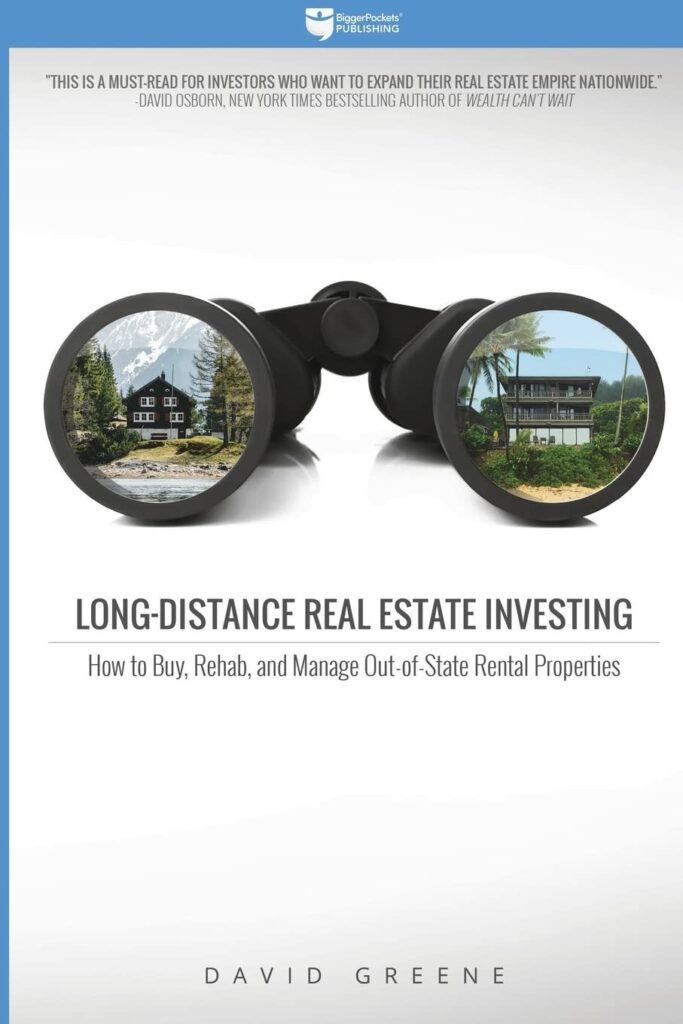Are you considering purchasing a rental property? If so, you’re likely aware that location is a critical factor in determining the success of your investment. Conducting a thorough neighborhood analysis is an essential step in making an informed decision. In this comprehensive guide, we’ll walk you through the process of conducting a neighborhood analysis for your rental property, ensuring that you choose the right location to maximize your returns.
How to Conduct a Neighborhood Analysis for Your Rental Property
Introduction to Neighborhood Analysis
Before delving into the specifics, let’s start with the basics. What exactly is a neighborhood analysis? It’s the process of evaluating the area surrounding a potential rental property to determine whether it’s a suitable investment. This analysis considers various factors that can impact your property’s desirability, rentability, and long-term value.
Why Conduct a Neighborhood Analysis
1. Ensuring Tenant Attraction and Retention
One of the primary goals of a neighborhood analysis is to assess whether your rental property will attract and retain tenants. A desirable neighborhood can lead to higher occupancy rates and longer lease agreements.
Imagine you have a rental property in a neighborhood with low crime rates, excellent schools, and easy access to amenities. This will undoubtedly make your property more appealing to potential tenants, increasing your chances of securing long-term, reliable renters.
2. Protecting Your Investment
By conducting a thorough analysis, you can identify potential risks and challenges that may affect your property’s value over time. This includes factors like crime rates and property values.
For instance, if you were to invest in a neighborhood with a declining real estate market, you might face difficulties in selling the property or achieving a reasonable return on investment. An in-depth analysis helps you steer clear of such pitfalls and make a more secure investment.
Gathering Data for Your Analysis
To conduct an effective neighborhood analysis, you’ll need data. Here’s how to gather it:
Online Resources
The internet is a treasure trove of information. You can find data on crime rates, school quality, property values, and more through various websites and databases. Let’s explore some of the critical data points you should consider:
a. Crime Rates
Safety should be a top priority for any prospective tenant. Research the neighborhood’s crime rates, both violent and property crimes, to assess its safety level. Websites like NeighborhoodScout, crimegrade.com and local police department websites provide valuable crime data.
b. School Quality
Families with children often prioritize good schools. Assess the quality of local schools and their proximity to your property. Websites like GreatSchools offer school ratings and reviews, helping you make an informed decision.
c. Property Values
Property values can significantly impact your investment’s potential for appreciation. Examine the historical trends in property values for the neighborhood. Websites like Zillow and Redfin provide data on home prices and market trends.
Local Agencies
Local government agencies and police departments often provide valuable data on crime rates, zoning laws, and community initiatives. Don’t hesitate to reach out to these agencies to access reliable, up-to-date information.
a. Zoning Laws
Understanding zoning laws is crucial for determining how you can use your rental property. Local zoning regulations may affect your ability to convert a property into a rental or make specific modifications.
b. Community Initiatives
Community involvement and development initiatives can greatly impact the neighborhood’s quality of life and attractiveness to renters. Explore local community websites and attend neighborhood meetings to learn about ongoing projects and community engagement.
Site Visits
Sometimes, the best way to assess a neighborhood is by visiting it in person. Walk around, talk to residents, and get a feel for the area. Pay attention to the following during your site visit:
a. Physical Condition
Inspect the overall condition of the neighborhood. Are properties well-maintained? Are there signs of neglect or disrepair?
b. Safety and Environment
Assess the safety of the neighborhood during your visit. Are there visible security measures in place? Is the environment clean and well-kept?
c. Community Interaction
Engage with local residents and businesses to get a sense of the community’s dynamics. Are people friendly and involved in community activities?
Key Factors to Consider
When analyzing a neighborhood, consider these key factors:
Safety
Safety should be a top priority. Research crime rates and speak with local law enforcement to gauge the neighborhood’s security.
Imagine you have a rental property in a neighborhood with low crime rates, excellent schools, and easy access to amenities. This will undoubtedly make your property more appealing to potential tenants, increasing your chances of securing long-term, reliable renters.
Schools and Education
Families with children often prioritize good schools. Assess the quality of local schools and their proximity to your property.
For instance, if you were to invest in a neighborhood with a declining real estate market, you might face difficulties in selling the property or achieving a reasonable return on investment. An in-depth analysis helps you steer clear of such pitfalls and make a more secure investment.
Proximity to Amenities
Access to grocery stores, parks, shopping centers, and healthcare facilities can significantly impact a neighborhood’s appeal.
Consider a scenario where your rental property is situated in a neighborhood with convenient access to essential amenities like grocery stores, parks, shopping centers, and healthcare facilities. This can enhance your property’s attractiveness to potential tenants, increasing your chances of securing long-term, reliable renters.
Employment Opportunities
A thriving job market can attract potential tenants. Research local industries and employment rates.
Imagine you invest in a neighborhood with a booming job market, offering various employment opportunities. This can lead to a steady influx of renters, ensuring your property remains occupied and generating consistent rental income.
Analyzing Demographics and Trends
Understanding the demographics of a neighborhood is essential. Are there specific age groups or cultural backgrounds that dominate the area? Additionally, research any ongoing trends, such as population growth or urban development projects.
Demographics
Analyze the demographic makeup of the neighborhood. Consider factors such as age groups, income levels, and cultural diversity. Understanding the demographics can help you tailor your rental property’s marketing and pricing strategies to attract the right tenants.
Trends
Stay informed about ongoing trends in the neighborhood. Are there upcoming development projects, new businesses, or revitalization efforts? Being aware of these trends can give you insights into the area’s future potential.
Assessing Property Values and Rental Rates
Property values and rental rates can vary greatly from one neighborhood to another. Compare prices in your target neighborhood with nearby areas to determine if it’s a good investment.
Property Values
Examine the historical trends in property values for the neighborhood. Have values been steadily increasing, indicating a desirable area for real estate investment?
Rental Rates
Research rental rates for similar properties in the neighborhood. Are the rates competitive and likely to provide you with a satisfactory return on investment?
By analyzing property values and rental rates, you can ensure that your investment aligns with your financial goals.
Community Engagement and Involvement
A strong sense of community can make a neighborhood more attractive to renters. Look for signs of community involvement, such as local events, neighborhood associations, and volunteer opportunities.
Local Events
Explore whether the neighborhood hosts regular community events and activities. A vibrant social calendar can indicate a strong sense of community.
Neighborhood Associations
Check if there are active neighborhood associations or groups. These organizations often work to improve the neighborhood’s quality of life and may be indicative of a well-engaged community.
Understanding Local Regulations and Zoning Laws
Local regulations and zoning laws can impact your property’s use and potential for expansion. Familiarize yourself with these regulations to avoid future complications.
Zoning Laws
Understanding zoning laws is crucial for determining how you can use your rental property. Local zoning regulations may affect your ability to convert a property into a rental or make specific modifications.
Building Codes
Review local building codes to ensure that your rental property complies with safety and structural requirements. Non-compliance could lead to costly renovations or penalties.
By staying informed about local regulations, you can avoid potential legal issues and ensure a smooth rental property experience.
Evaluating Transportation and Accessibility
Easy access to public transportation, highways, and major roads can enhance your property’s appeal. Evaluate the neighborhood’s transportation options.
Public Transportation
Assess the availability and reliability of public transportation in the area. Convenient access to buses, trains, or subway systems can make your rental property more appealing to tenants who rely on public transit.
Major Roads and Highways
Consider the accessibility of major roads and highways. A location with easy access to transportation arteries can attract tenants who commute for work or leisure.
Environmental Considerations
Consider environmental factors like air quality, noise levels, and proximity to natural attractions. These can affect the overall quality of life for your tenants.
Air Quality
Check air quality reports for the neighborhood. Clean air and a healthy environment can be selling points for your rental property.
Noise Levels
Evaluate noise levels in the area. A peaceful neighborhood is more likely to attract tenants seeking a quiet and serene living environment.
Natural Attractions
Proximity to parks, lakes, hiking trails, or other natural attractions can enhance your property’s appeal. Tenants who appreciate outdoor activities may find such locations enticing.
Putting it All Together: Creating Your Neighborhood Analysis
Now that you’ve gathered data and assessed key factors, it’s time to create a comprehensive neighborhood analysis. This analysis should include the following components:
Overview of the Neighborhood
Provide a general overview of the neighborhood, including its location, size, and historical background.
Key Statistics
Present key statistics related to crime rates, school quality, property values, and rental rates. Use charts and graphs to make the data visually accessible.
Suitability Assessment
Offer your assessment of the neighborhood’s suitability for your rental property. Highlight its strengths and potential challenges.
Recommendations
Based on your analysis, make recommendations for potential improvements or strategies to maximize the property’s appeal to tenants.
Conclusion: Making Informed Rental Property Decisions
A thorough neighborhood analysis is an indispensable tool for any real estate investor. It empowers you to make informed decisions, mitigate risks, and maximize the returns on your rental property. Remember that the neighborhood you choose can significantly impact your investment’s success.
By conducting a comprehensive analysis, you increase your chances of:
- Attracting and retaining desirable tenants.
- Safeguarding your investment against potential risks.
- Achieving a favorable return on investment.
- Contributing positively to the community and neighborhood development.
FAQs on Conducting a Neighborhood Analysis for Rental Property
- What are the essential factors to consider in a neighborhood analysis?A thorough neighborhood analysis should consider factors such as safety, school quality, proximity to amenities, employment opportunities, and local regulations.
- How can I access data on crime rates and school quality in a specific neighborhood?You can access data on crime rates from websites like NeighborhoodScout or your local police department’s website. For school quality, websites like GreatSchools provide ratings and reviews.
- What role does community engagement play in a neighborhood’s desirability?Community engagement can enhance a neighborhood’s desirability by fostering a sense of belonging and improving the overall quality of life for residents.
- Why is it crucial to understand local regulations and zoning laws?Understanding local regulations and zoning laws is crucial to ensure that your rental property complies with legal requirements and avoids potential complications.
- How can I stay updated on changing trends in a neighborhood over time?Staying informed about changing trends in a neighborhood involves regularly monitoring local news, attending community meetings, and networking with local residents and real estate professionals.
In conclusion, conducting a neighborhood analysis is a vital step in the process of purchasing a rental property. By following these guidelines and thoroughly researching your target neighborhood, you can make informed decisions that will benefit both you and your future tenants. Happy investing!





